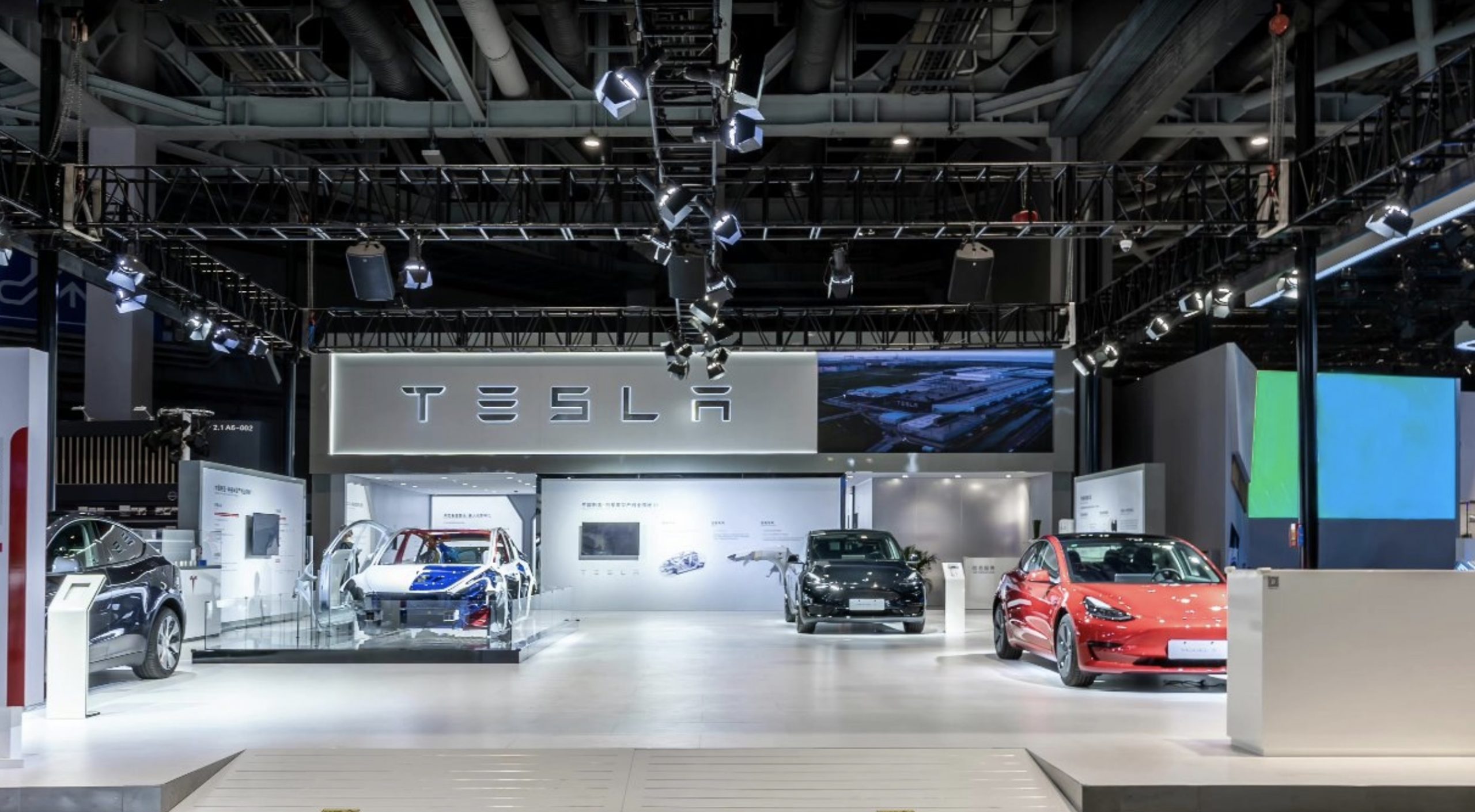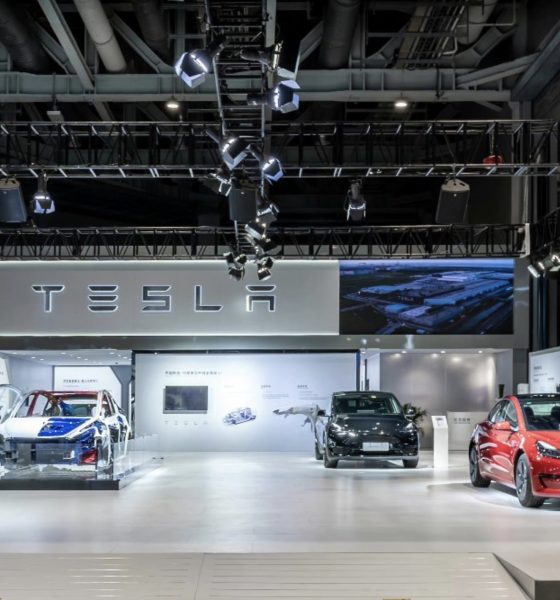

News
‘Dismayed’ U.S. Lawmakers pen letter to Tesla’s Musk questioning Xinjiang Showroom
Two “dismayed” United States Lawmakers have penned a letter to Tesla CEO Elon Musk questioning the company’s recent opening of a showroom in the Xinjiang region of China.
In early January, Tesla opened a showroom in Xinjiang, a controversial region of China that is often under intense scrutiny due to its human rights abuses. The area is currently the holding location of Uyghur Muslims, who are being held due to potential extremist and separatist ideas, according to the Council on Foreign Relations (CFR).
The opening of the showroom prompted a harsh warning to any U.S. entity that plans to open operations in the region from White House Press Secretary Jen Psaki, who said that companies that fail to address forced human labor or human rights abuses could “face serious legal, reputational, and customer risk.”
Now, Bill Pascrell, Jr. (D-NJ 9th District) and Earl Blumenauer (D-OR 3rd District) have written a letter to Musk, calling the company’s decision to open a showroom “misguided.” Additionally, Pascrell Jr. and Blumenauer have asked Musk questions regarding Tesla’s future in China.
“We are dismayed that Tesla has reportedly opened a showroom in the province that is at the heart of China’s Uyghur detainment in camps and forced labor in factories,” Pascrell Jr. and Blumenauer wrote. “As the Chinese Communist Party (CCP) commits genocide against the Uyghur peoples and ramps up its hostility towards America and our allies, your misguided expansion into the Xinjiang Uyghur Autonomous Region sets a poor example and further empowers the CCP at a fraught moment.”
Human Rights Watch, a non-governmental, international organization that “defends the rights of people in 100 countries worldwide,” estimates that one million Uyghur Muslims are detained in the region.
“Evidence of the genocide in Xinjiang is well documented. From the farm to finished goods, forced labor in the region appears to be prevalent at all levels of the supply chain because of the CCP’s internment of more than one million Uyghurs, as well as forced labor by prisoners incarcerated in the Chinese government’s penal system,” the lawmakers wrote. “Numerous credible reports have detailed forced labor and other violations of fundamental human rights under the CCP’s rule. Weeks after CCP General Secretary Xi Jinping all but declared himself dictator for life and the CCP politburo standing committee tightened its totalitarian grip over virtually every sector, American business cannot further empower the gross human rights violations of the CCP.”
While at least 50 companies in the Fortune 500 have operations in the Xinjiang region, Tesla’s most recent expansion into the area has caused plenty of uprise from politicians. Tesla has not issued a formal statement regarding its showroom in Xinjiang.
The full letter to Musk is available below.
In December, President Biden signed the Uyghur Forced Labor Prevention act, which bans imports from the Xinjiang region unless companies can prove that their products were not made with forced labor.
2022.01.19_bp_eb_to_tesla by Joey Klender on Scribd

News
Tesla starts showing how FSD will change lives in Europe
Local officials tested the system on narrow country roads and were impressed by FSD’s smooth, human-like driving, with some calling the service a game-changer for everyday life in areas that are far from urban centers.

Tesla has launched Europe’s first public shuttle service using Full Self-Driving (Supervised) in the rural Eifelkreis Bitburg-Prüm region of Germany, demonstrating how the technology can restore independence and mobility for people who struggle with limited transport options.
Local officials tested the system on narrow country roads and were impressed by FSD’s smooth, human-like driving, with some calling the service a game-changer for everyday life in areas that are far from urban centers.
Officials see real impact on rural residents
Arzfeld Mayor Johannes Kuhl and District Administrator Andreas Kruppert personally tested the Tesla shuttle service. This allowed them to see just how well FSD navigated winding lanes and rural roads confidently. Kruppert said, “Autonomous driving sounds like science fiction to many, but we simply see here that it works totally well in rural regions too.” Kuhl, for his part, also noted that FSD “feels like a very experienced driver.”
The pilot complements the area’s “Citizen Bus” program, which provides on-demand rides for elderly residents who can no longer drive themselves. Tesla Europe shared a video of a demonstration of the service, highlighting how FSD gives people their freedom back, even in places where public transport is not as prevalent.
What the Ministry for Economic Affairs and Transport says
Rhineland-Palatinate’s Minister Daniela Schmitt supported the project, praising the collaboration that made this “first of its kind in Europe” possible. As per the ministry, the rural rollout for the service shows FSD’s potential beyond major cities, and it delivers tangible benefits like grocery runs, doctor visits, and social connections for isolated residents.
“Reliable and flexible mobility is especially vital in rural areas. With the launch of a shuttle service using self-driving vehicles (FSD supervised) by Tesla in the Eifelkreis Bitburg-Prüm, an innovative pilot project is now getting underway that complements local community bus services. It is the first project of its kind in Europe.
“The result is a real gain for rural mobility: greater accessibility, more flexibility and tangible benefits for everyday life. A strong signal for innovation, cooperation and future-oriented mobility beyond urban centers,” the ministry wrote in a LinkedIn post.
News
Tesla China quietly posts Robotaxi-related job listing
Tesla China is currently seeking a Low Voltage Electrical Engineer to work on circuit board design for the company’s autonomous vehicles.

Tesla has posted a new job listing in Shanghai explicitly tied to its Robotaxi program, fueling speculation that the company is preparing to launch its dedicated autonomous ride-hailing service in China.
As noted in the listing, Tesla China is currently seeking a Low Voltage Electrical Engineer to work on circuit board design for the company’s autonomous vehicles.
Robotaxi-specific role
The listing, which was shared on social media platform X by industry watcher @tslaming, suggested that Tesla China is looking to fill the role urgently. The job listing itself specifically mentions that the person hired for the role will be working on the Low Voltage Hardware team, which would design the circuit boards that would serve as the nervous system of the Robotaxi.
Key tasks for the role, as indicated in the job listing, include collaboration with PCB layout, firmware, mechanical, program management, and validation teams, among other responsibilities. The role is based in Shanghai.
China Robotaxi launch
China represents a massive potential market for robotaxis, with its dense urban centers and supportive policies in select cities. Tesla has limited permission to roll out FSD in the country, though despite this, its vehicles have been hailed as among the best in the market when it comes to autonomous features. So far, at least, it appears that China supports Tesla’s FSD and Robotaxi rollout.
This was hinted at in November, when Tesla brought the Cybercab to the 8th China International Import Expo (CIIE) in Shanghai, marking the first time that the autonomous two-seater was brought to the Asia-Pacific region. The vehicle, despite not having a release date in China, received a significant amount of interest among the event’s attendees.
Elon Musk
Elon Musk and Tesla AI Director share insights after empty driver seat Robotaxi rides
The executives’ unoccupied tests hint at the rapid progress of Tesla’s unsupervised Robotaxi efforts.

Tesla CEO Elon Musk and AI Director Ashok Elluswamy celebrated Christmas Eve by sharing personal experiences with Robotaxi vehicles that had no safety monitor or occupant in the driver’s seat. Musk described the system’s “perfect driving” around Austin, while Elluswamy posted video from the back seat, calling it “an amazing experience.”
The executives’ unoccupied tests hint at the rapid progress of Tesla’s unsupervised Robotaxi efforts.
Elon and Ashok’s firsthand Robotaxi insights
Prior to Musk and the Tesla AI Director’s posts, sightings of unmanned Teslas navigating public roads were widely shared on social media. One such vehicle was spotted in Austin, Texas, which Elon Musk acknowleged by stating that “Testing is underway with no occupants in the car.”
Based on his Christmas Eve post, Musk seemed to have tested an unmanned Tesla himself. “A Tesla with no safety monitor in the car and me sitting in the passenger seat took me all around Austin on Sunday with perfect driving,” Musk wrote in his post.
Elluswamy responded with a 2-minute video showing himself in the rear of an unmanned Tesla. The video featured the vehicle’s empty front seats, as well as its smooth handling through real-world traffic. He captioned his video with the words, “It’s an amazing experience!”
Towards Unsupervised operations
During an xAI Hackathon earlier this month, Elon Musk mentioned that Tesla owed be removing Safety Monitors from its Robotaxis in Austin in just three weeks. “Unsupervised is pretty much solved at this point. So there will be Tesla Robotaxis operating in Austin with no one in them. Not even anyone in the passenger seat in about three weeks,” he said. Musk echoed similar estimates at the 2025 Annual Shareholder Meeting and the Q3 2025 earnings call.
Considering the insights that were posted Musk and Elluswamy, it does appear that Tesla is working hard towards operating its Robotaxis with no safety monitors. This is quite impressive considering that the service was launched just earlier this year.








